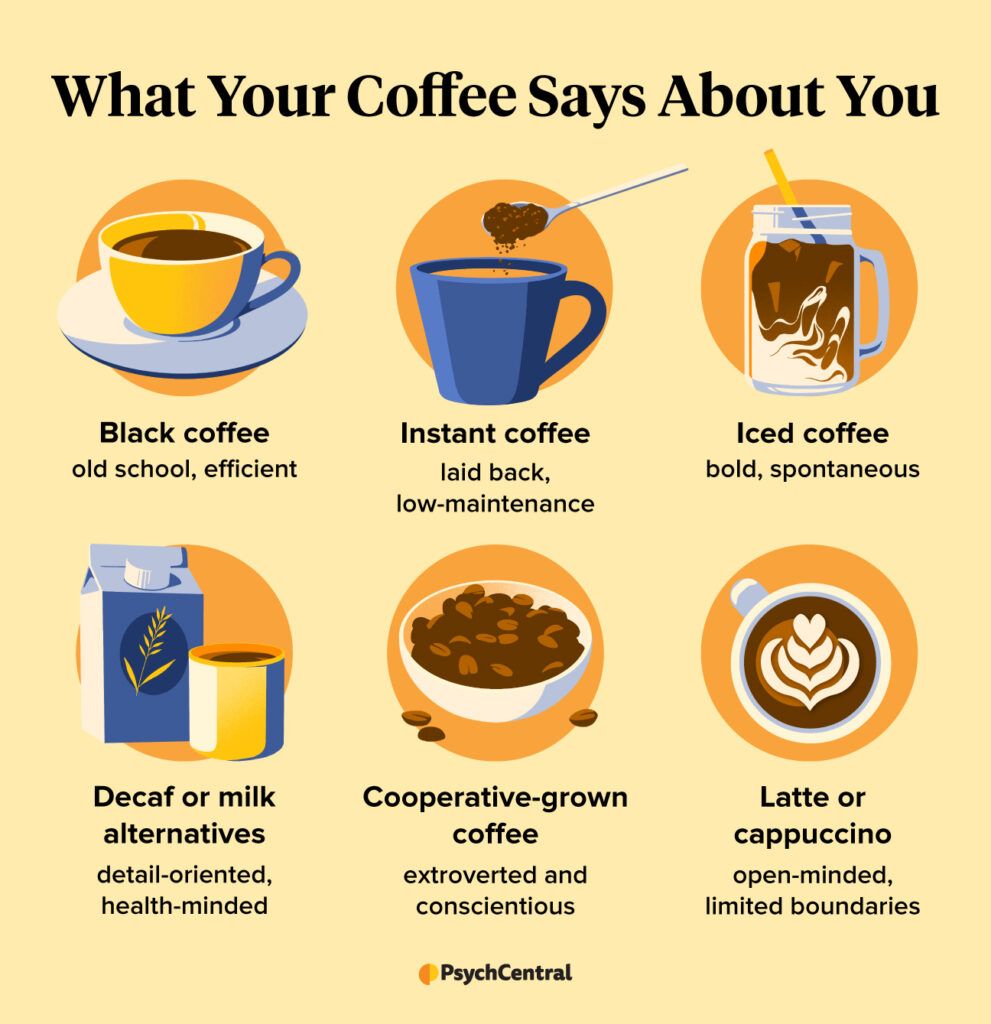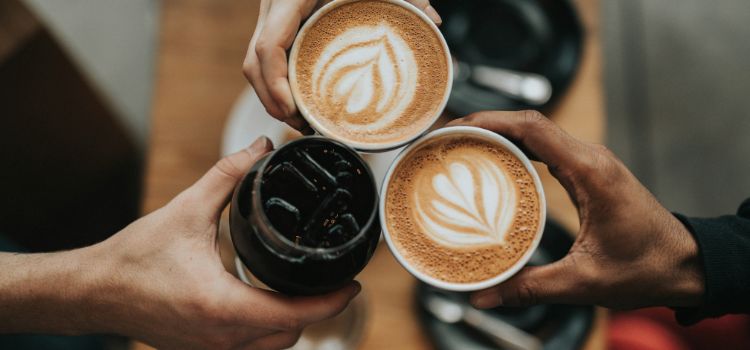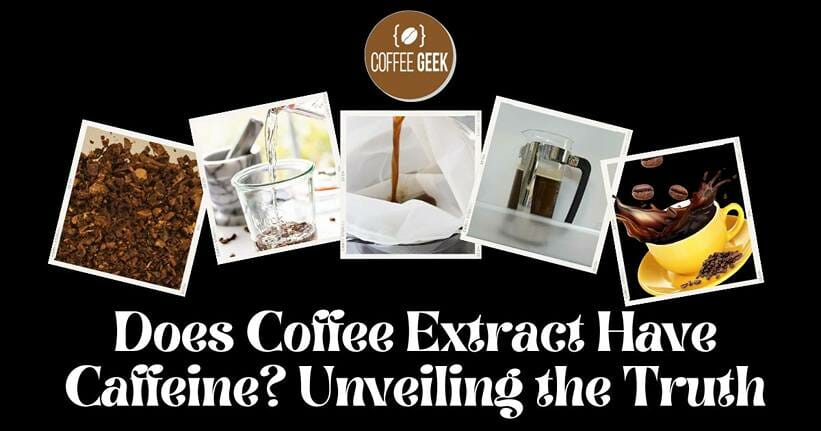Yes, cappuccino contains caffeine. A standard cappuccino is made with one shot of espresso, which typically has about 63 milligrams of caffeine.
Cappuccinos are a beloved part of coffee culture, known for their rich flavor and creamy texture. Originating from Italy, these popular beverages combine the bold taste of espresso with the smoothness of frothed milk. Casual coffee drinkers and connoisseurs alike enjoy cappuccinos for their satisfying balance and the gentle energy boost they provide.
Espresso, the coffee base for cappuccinos, is highly concentrated and caffeinated, ensuring that every cup packs a punch. Whether you’re starting your morning or looking for an afternoon pick-me-up, a cappuccino offers a delightful way to energize your day. With its frothy top, it’s not just a drink, but a luxurious experience that can be crafted to perfection by skilled baristas or made at home for a personal touch.

Caffeine Content In Cappuccino
Many coffee lovers enjoy a frothy cappuccino but often wonder about its caffeine content. Let’s dive into how much caffeine a cappuccino actually contains.
The Basics of a Cappuccino
The Basics Of A Cappuccino
A cappuccino is an espresso-based coffee drink, traditional in Italian cuisine. It’s equal parts espresso, steamed milk, and milk froth.
- Espresso: The coffee base of the drink.
- Steamed Milk: Adds creaminess to the taste.
- Milk Froth: Gives the cappuccino its signature texture.
A single shot of espresso typically contains about 63 milligrams of caffeine. Since most cappuccinos are made with one shot, that’s approximately how much caffeine they have.
Comparing Caffeine: Cappuccino Vs. Other Coffees
Comparing Caffeine: Cappuccino Vs. Other Coffees
Caffeine levels can vary in different coffee drinks. Here’s a quick comparison.
| Coffee Type | Caffeine Content (Approx.) |
|---|---|
| Cappuccino | 63 mg per shot |
| Espresso | 63 mg per shot |
| Americano | 95 mg per serving |
| Latte | 77 mg per serving |
| Drip Coffee | 95-200 mg per serving |
The cappuccino shares its caffeine content with the espresso since they use the same base. But filtered coffee can often deliver more caffeine per serving.
How A Cappuccino Delivers Its Buzz
Do you ever wonder what gives a cappuccino that energizing lift? Beyond its rich flavor and creamy texture, the cappuccino holds a secret to your morning buzz. Let’s dive into the heart of this beloved beverage and uncover how caffeine works its magic.
Espresso Shots: The Caffeine Engine
The main source of caffeine in a cappuccino is the espresso shot. Espresso is a concentrated coffee brew, crafted by forcing hot water through finely-ground coffee beans. The result is a strong, bold flavor packed with caffeine. Here’s a quick glance at the caffeine content:
- Single espresso shot: Approximately 63 mg of caffeine
- Double espresso shot: Roughly 126 mg of caffeine
A standard cappuccino typically includes one or two shots of espresso, giving you a customizable caffeine kick.
Milk’s Effect On Caffeine Absorption
Milk in a cappuccino does more than just add creaminess. It can affect how your body absorbs caffeine. Protein and fat in milk may slow down the absorption process, leading to a more gradual caffeine release. This helps to avoid the quick spike and crash often associated with black coffee consumption.
| Milk Type | Effect on Caffeine |
|---|---|
| Whole Milk | Gentle & gradual absorption |
| Skim Milk | Quicker absorption than whole milk |
Whether you opt for whole, skimmed, or plant-based milk, your cappuccino will still provide that delightful buzz, although its intensity and duration can vary.
Cappuccino Variations And Caffeine Levels
A cappuccino delights coffee lovers around the world. Yet not all cappuccinos are the same. Different variations affect caffeine content. Let’s explore these differences and shed light on how much caffeine your favorite cappuccino holds.
Single Vs. Double Shot Cappuccinos
Single shot cappuccinos provide a gentle caffeine boost. These contain roughly 85 mg of caffeine. Double shots pack a punch with about 170 mg. Your choice depends on your caffeine needs.
| Type | Caffeine Content |
|---|---|
| Single Shot | 85 mg |
| Double Shot | 170 mg |
Decaf Options: Myth Or Reality?
Decaf cappuccinos are real and ideal for late-night cravings. They usually have less than 5 mg of caffeine per cup. Decaf doesn’t mean caffeine-free. But it’s close enough for those sensitive to the stimulant.
- Regular decaf – up to 5 mg caffeine
- Swiss Water Process – 99.9% caffeine-free

Caffeine Sensitivity And Consumption Advice
Many people wonder about the caffeine in their cappuccino. It’s important to know how much your body can handle. This section provides advice on caffeine sensitivity and how to enjoy cappuccinos safely.
Understanding Your Caffeine Threshold
Everyone’s body reacts differently to caffeine. Some can drink multiple cups of coffee with no issue, while others may experience jitters with just one. To understand your own caffeine threshold, start by noting how you feel after a cappuccino.
- Notice any restlessness or difficulty sleeping?
- Do you feel anxious or irritable?
- Keep a journal of your reactions to track your limit.
Consulting a doctor can also provide personalized advice. They might suggest a caffeine tolerance test. This test reveals how quickly your body processes caffeine.
Healthy Cappuccino Drinking Habits
A cappuccino can be a delightful part of your routine if enjoyed responsibly. Here’s how to keep your habit healthy:
- Morning is best. Caffeine can stay in your system for hours. Try to enjoy your cappuccino earlier in the day.
- Monitor serving size. Stick to one standard cup, especially if you’re sensitive.
- Choose decaf if necessary. Later in the day, opt for a decaffeinated version. It has much less caffeine.
Remember, a standard cappuccino has nearly the same caffeine as a regular coffee. It’s all in the espresso shot used to make it. A typical shot of espresso has about 63 milligrams of caffeine. One cup might be just right to energize your day without overdoing it.
Crafting The Perfect Cappuccino At Home
Many coffee lovers dream of making the perfect cappuccino at home. It’s a delightful treat that combines espresso, hot milk, and a top layer of frothy, creamy milk foam. Achieving this coffeehouse staple in your own kitchen is possible with a few barista-level skills and the right equipment. Not only does it offer a caffeine kick, but it’s also a chance to hone your coffee-making talents.
Selecting The Right Coffee Beans
The journey to a sublime cappuccino starts with the right coffee beans. Choose beans that are fresh and of high quality. For the classic cappuccino flavor, aim for a balanced blend of Arabica and Robusta beans. Here’s what to look for:
- Aroma: Beans should be fragrant and pleasant.
- Roast date: Freshness is key, so pick beans roasted within the past two weeks.
- Origin: Different regions offer unique flavors. Experiment to find your favorite.
Mastering The Art Of Milk Frothing
Rich, silky foam can elevate your cappuccino to barista standards. Use cold milk, and fill your frother to the appropriate level. Follow these simple steps:
- Pour milk into your frother, not exceeding the max fill line.
- Heat milk until it’s steaming but not boiling. A thermometer can help you find the perfect temperature, typically between 150°F and 160°F.
- Froth until you achieve a creamy, not bubbly, texture.
- Gently swirl the milk jug to break any large bubbles and to make the texture even creamier.
With practice, frothing will become second nature, and you’ll create the perfect cap of foam for your homemade cappuccino each time.

Frequently Asked Questions For Does Cappuccino Have Caffeine
How Much Caffeine Is In A Cappuccino?
A typical cappuccino has approximately 63 milligrams of caffeine per shot of espresso. Since cappuccinos traditionally contain one shot, that’s the caffeine content you can expect, although some variations or larger sizes can double that amount.
Is Cappuccino A High-caffeine Coffee?
Cappuccino is not considered high in caffeine when compared to other coffee beverages. It typically contains less caffeine than a standard drip coffee due to the single espresso shot and greater proportion of milk.
Can You Get Decaf Cappuccino?
Yes, you can get a decaf cappuccino. Most coffee shops offer decaffeinated espresso, which can be used to make a cappuccino without the usual caffeine content.
Does Cappuccino Caffeine Content Affect Sleep?
Caffeine in cappuccino can affect sleep patterns due to its stimulant properties. It’s generally advisable not to consume caffeine close to bedtime to avoid disturbances in falling or staying asleep.
Conclusion
To sum it up, cappuccinos do include caffeine, integral to their energizing effect. Their unique blend of espresso and frothy milk delivers a moderate caffeine kick. For coffee aficionados mindful of their intake, understanding this ensures a balanced coffee experience.
Embrace the cappuccino’s buzz with knowledge and enjoy!

